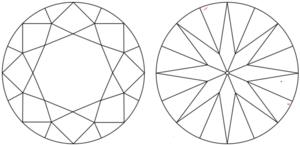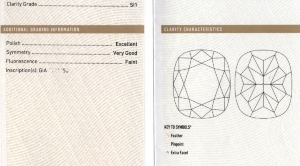faykis
Rough_Rock
- Joined
- Feb 27, 2016
- Messages
- 12
Hi all, I am from Sydney and looking forward to buy an solitaire RB diamond ring.
I was looking for something .75ct to .8ct. However once I went to a local reputable store (GS diamonds), they showed me a 0.9 carat diamnd.
Its a GIA RB F/ SI2/ 3ex/ no fluoro and priced AUD5700 (equivalent to USD4061)
the best thing about the diamond is its big. diameters are 6.23×6.24×3.83
It fits by budget very well for the size and its great white too. The only problem the inclusions. It looks eyeclean from the top. with loup there is a black spot at the top but i couldnt see anything from the top with naked eye even if i tried hard.
My main concern is the sides. I looked from the sides of the diamond and saw a few pinpoint kinda spots floating around. it was easily visible when I looked at it with naked eye from 6inches distance. I have already made up my mind to use a 4 claw setting where the sides of the stone will be visible. Do you guying think it will be worth buying this stone?
the lady at the store told me that if I look from the sides of the stone, inclusions will always be visible, even in SI1 and some VS2 stones as well they are if you look from the sides. is it true?
I am a bit worried. the other stones I found which were eye clean from the sides were .75 carat or maximum 5.9mm diameter which seems tiny. This one looked really large and lovely size for my budget, but I am sure I will keep looking at it from the sides.
I would appreciate your advice.
Thanks
F
I was looking for something .75ct to .8ct. However once I went to a local reputable store (GS diamonds), they showed me a 0.9 carat diamnd.
Its a GIA RB F/ SI2/ 3ex/ no fluoro and priced AUD5700 (equivalent to USD4061)
the best thing about the diamond is its big. diameters are 6.23×6.24×3.83
It fits by budget very well for the size and its great white too. The only problem the inclusions. It looks eyeclean from the top. with loup there is a black spot at the top but i couldnt see anything from the top with naked eye even if i tried hard.
My main concern is the sides. I looked from the sides of the diamond and saw a few pinpoint kinda spots floating around. it was easily visible when I looked at it with naked eye from 6inches distance. I have already made up my mind to use a 4 claw setting where the sides of the stone will be visible. Do you guying think it will be worth buying this stone?
the lady at the store told me that if I look from the sides of the stone, inclusions will always be visible, even in SI1 and some VS2 stones as well they are if you look from the sides. is it true?
I am a bit worried. the other stones I found which were eye clean from the sides were .75 carat or maximum 5.9mm diameter which seems tiny. This one looked really large and lovely size for my budget, but I am sure I will keep looking at it from the sides.
I would appreciate your advice.
Thanks
F





300x240.png)